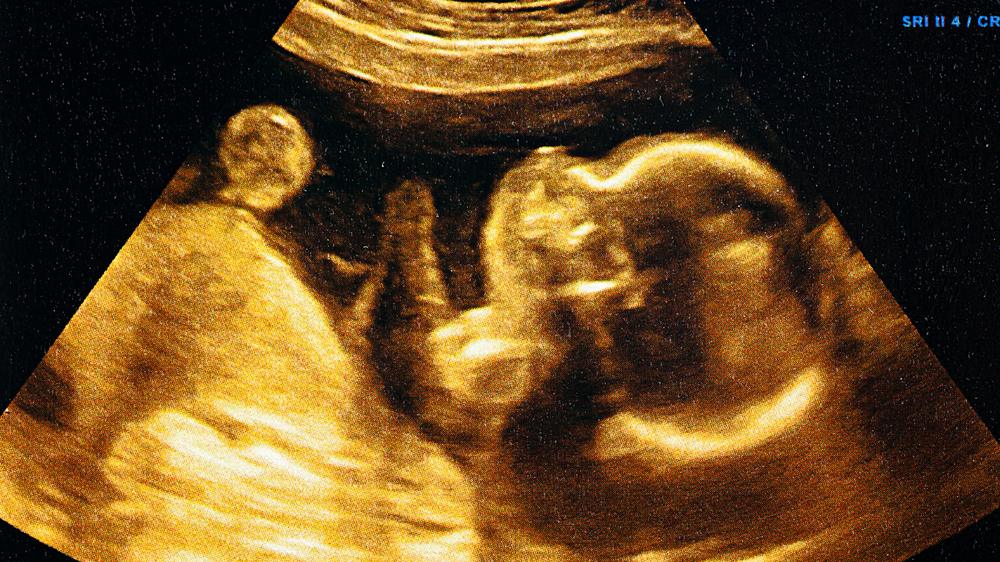In this article:
What Are Foetal Breathing Movements?
Foetal breathing movements arepractice motions. Instead of inhaling air, the baby moves amniotic fluid in and out of the lungs. This strengthens and matures the respiratory system before birth.Key characteristics of FBMs include:
- They usually start around 20 to 22 weeks but become more regular and noticeable in the third trimester.
- Movements appear as gentle rhythmic pulsations in the chest or diaphragm.
- They are often observed through ultrasound scans.
- FBMs indicate a well-functioning central nervous system and healthy oxygen supply.
Why Foetal Breathing Movements Matter
In the third trimester, FBMs help monitor foetal well-being. Here’s why they matter:Indicator of Foetal Health
- Regular breathing movements signal that the brain and nervous system are developing normally.
- They indicate the baby is receiving enough oxygen through the placenta.
- These motions strengthen respiratory muscles, preparing the lungs to function after delivery.
- This preparation helps reduce complications like respiratory distress after birth.
- Doctors use FBMs as part of the biophysical profile (BPP), a standard prenatal test in India to check overall foetal health.
- Absence or reduction of these movements may prompt further investigation to ensure the baby’s well-being.
How Doctors Observe Foetal Breathing Movements
In India, ultrasound is the most reliable and non-invasive method for monitoring FBMs.During the scan:
- Doctors usually check for rhythmic chest wall movements lasting for at least 30 seconds within 30 minutes.
- Consistent FBMs indicate a normal biophysical profile score.
- If absent, doctors may recommend repeat scans or extra monitoring.
When Do Foetal Breathing Movements Occur Most Often?
Just like adults have active and restful phases, babies in the womb also follow similar rhythms.Here’s what is commonly observed:
- FBMs are more frequent after meals, as elevated glucose levels stimulate activity.
- They are less common when the baby is in a sleep cycle.
- Some studies show that late evening hours can have increased foetal activity, including breathing movements.
Factors Influencing Foetal Breathing Movements
Several internal and external factors can influence how frequently FBMs occur:- Maternal blood glucose levels: Slightly higher levels can increase foetal activity.
- Oxygen levels: Reduced oxygen supply to the baby can temporarily suppress FBMs.
- Smoking or alcohol intake: Both can reduce foetal activity, including breathing movements.
- Maternal stress: Elevated stress hormones can sometimes affect the baby’s movement pattern.
- Gestational age: FBMs become more regular and coordinated as the pregnancy progresses into the final weeks.
What a Lack of Foetal Breathing Movements Can Mean
A temporary lack of FBMs is common. Persistent absence requires closer observation. Possible medical considerations include:- Placental insufficiency: Reduced oxygen and nutrient flow to the baby.
- Foetal hypoxia: Low oxygen levels in the foetus.
- Sleep cycles: Babies spend nearly one-third of their time sleeping in utero, during which their movements slow.
- A non-stress test (NST) to check the baby’s heart rate.
- Additional Doppler studies to assess blood flow through the placenta and umbilical cord.
Indian Pregnancy Care Perspective
In India, antenatal care has evolved significantly, especially in urban and semi-urban settings. Awareness around biophysical profiles and foetal movement tracking has grown among expectant parents.Public and private hospitals increasingly offer structured third-trimester screenings, which often include:
- Ultrasound assessments of foetal growth, heart rate, and FBMs.
- Counselling sessions to educate expectant parents on recognising healthy foetal movement patterns.
- Nutritional guidance that supports oxygen supply and foetal development.
Supporting Healthy Foetal Movements Naturally
Expectant parents can support their baby’s breathing movements through mindful care:- Stay hydrated – Adequate fluid intake helps maintain healthy amniotic fluid levels.
- Eat balanced meals – Include iron-rich foods, fruits, and whole grains.
- Avoid tobacco and alcohol – Both can interfere with foetal oxygenation.
- Manage stress – Practice deep breathing or prenatal yoga under guidance.
- Attend regular antenatal check-ups – Early detection through monitoring ensures a healthy pregnancy.
Foetal breathing movements are one of the most reassuring signs of a healthy pregnancy. By the third trimester, these tiny rhythmic motions show that the lungs, brain, and muscles are working together in harmony. Regular monitoring, along with balanced nutrition and emotional well-being, ensures that your baby continues to thrive.
Indian pregnancy care has made significant progress in identifying and supporting these markers. Understanding FBMs empowers you to be part of your baby’s journey, celebrating every heartbeat, flutter, and gentle breath before birth.
Whether you’re pregnant, a new mom, or navigating postpartum, you don’t have to do it alone. Join our support group to connect, share, and support one another.
FAQs on Why Foetal Breathing Movements Matter: A Key Indicator for Healthy Pregnancy in India
- Can foetal breathing movements be felt by the parent?
No, these movements are too subtle to be felt externally. They are detected only through ultrasound imaging. - What happens if foetal breathing movements are not seen in an ultrasound?
It may mean the baby is resting. Doctors usually rescan after some time before drawing any conclusions. - How often should foetal breathing movements be checked?
They are typically assessed during scheduled third-trimester ultrasounds or as part of the biophysical profile. Regular antenatal visits help ensure consistent monitoring.










